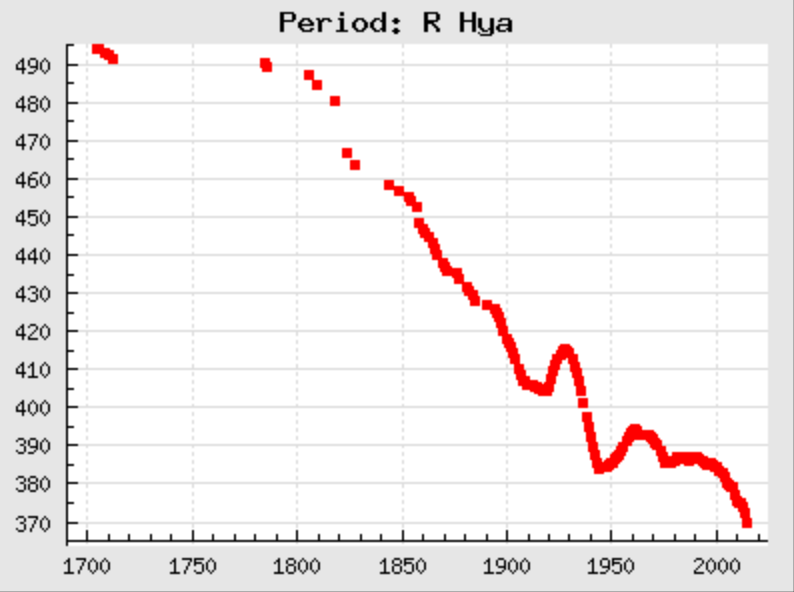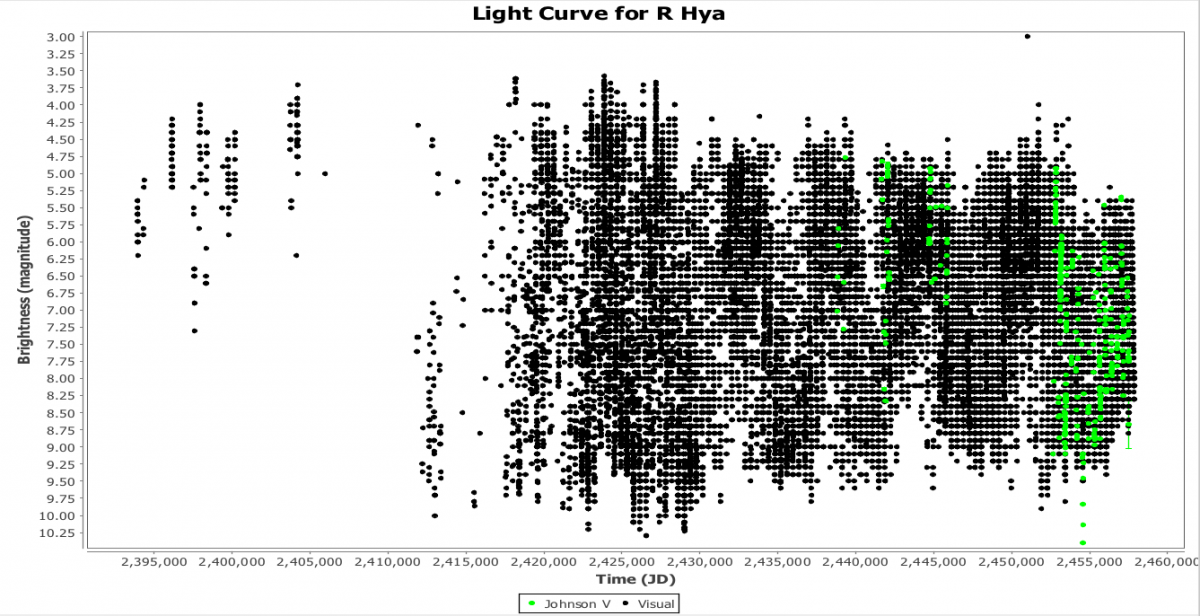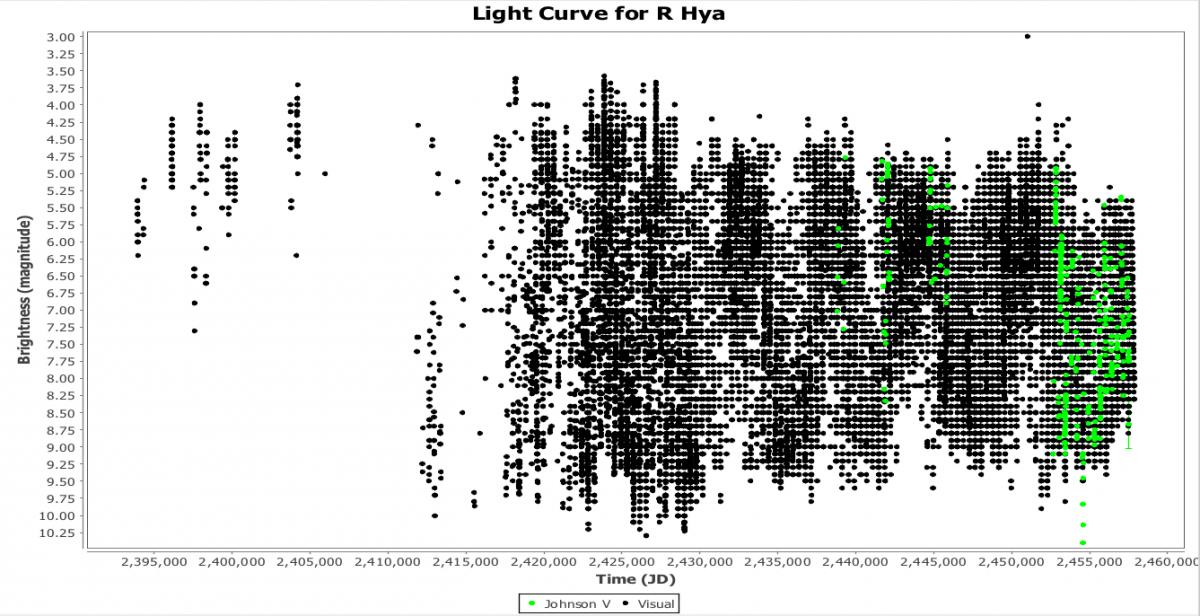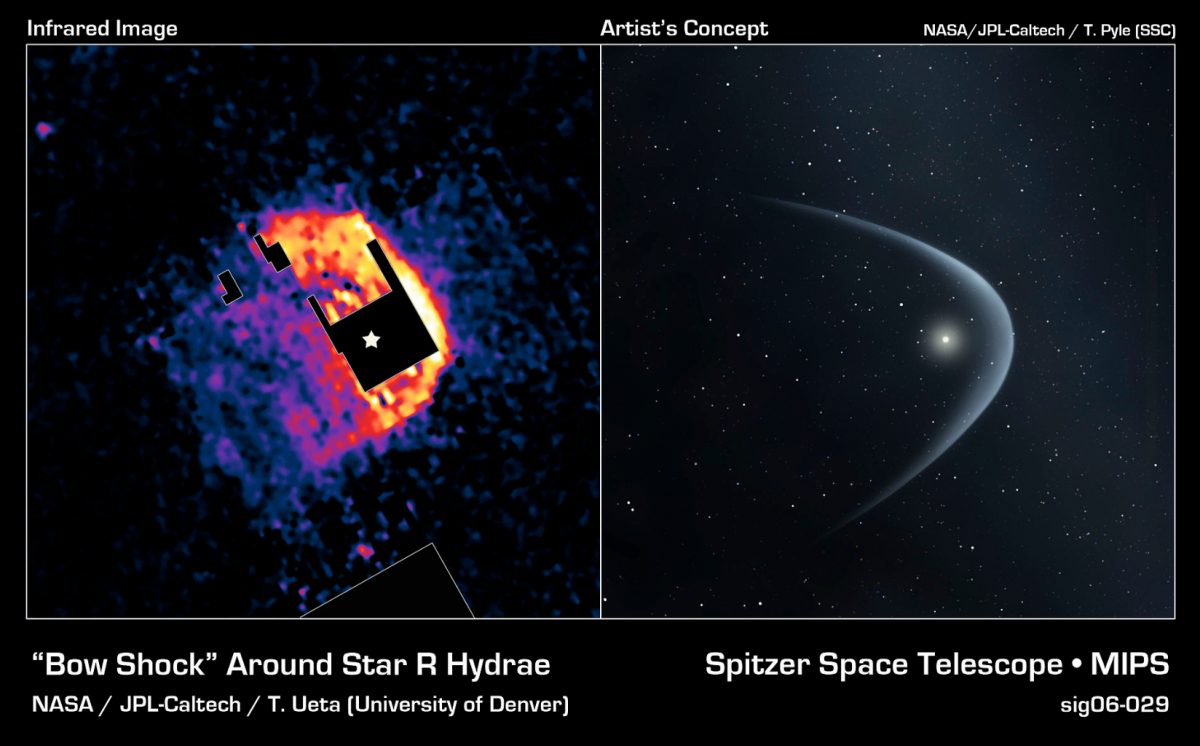MAY 2017
R Hydrae
R Hydrae is an M (Mira) type of LPV of Spectral type M6e-M9eS(Tc). It's Magnitude Range 3.5 to 10.9 in both V and Visual. Currently there are 24,890 observations in the AAVSO International Database starting in April 5, 1842 although there are reports of observations going back to 1662. R HYA is located at 13h 29m 42.78s and -23d 16m 52.8s which means it can be observers from much of the Northern and Southern hemisphere. It is also bright enough that it should be a good object for Visual observers.
R HYA (R Hydrae) was the third Mira-type variable star to be discovered in the early 1700s.
An excellent article on the background of R HYA can be found on the AAVSO website at https://www.aavso.org/vsots_rhya. This article is to provide an update to the above article.
Period Decline
R Hya is another Mira star that is showing a declining period. It's gone from about 495 days around the year 1700, 480 days by 1800 and 450 days in 1850. By 1920 the period was 420 days and in 1950 it slowed down and started to vary between 380 to 395 days.

The above is a period graph for R Hya from Thomas Karlsson's monumental work of the O/C, Period and Mean Light Curves of around 490 Mira variable stars. The main webpage of his study can be found at http://var.astronet.se/mirainfooc.php and graphically shows R HYAs period decline. It has been mentioned that this period decline “leveled” off around 1950.
However from this Period graph it looks like the period for R HYA is declining again since the mid-90s to about 370 days and dropping. It is important to watch the period of this star in the future to see if this star's period continues to drop, particularly in Visual and V. This behavior may be the result of a “shell flash” and more data in the future may help astronomers understand what the long term light curve may look like after a “shell flash” occurs in an LPV.
Observations

The above graph taken with AAVSO VSTAR tool shows all of the Visual and V observations reported to the AAVSO International Database going back to 1842.

The magnitude of R HYA's Maxima and Minima can vary like many other Mira stars. In this closer look at R HYA's light curve it's been mentioned that since 2008 the over all brightness for each cycle seems to have leveled off and now appears to be getting smaller. It appears that this behavior for R HYA may happened a few times in the past. It has been suggested that this behavior may be loosely related to the star's period decrease but needs to be watched in Visual and V filter to see if the behavior continues.
Shell Flash
John Isles in a 1996 paper does an excellent job explaining the potential “shell flash” that R HYA may have gone through to product it's decreasing period. I quote his writings from the earlier AAVSO article mentioned above.
“The century of steady decrease in R Hydrae's period is consistent with theoretical calculations of what should happen to a pulsating red giant after the sudden ignition of helium near its core. Mira stars are old and highly evolved, and their supplies of nuclear fuel are close to exhaustion. At the center of the star is a small but very dense core composed almost entirely of carbon and oxygen, the end products of helium fusion. In a shell just outside this core, hydrogen is being converted to helium, so a thin layer of helium builds up on the core's surface. Every 1,000 to 10,000 years this helium shell should reach a critical mass and ignite, creating more carbon and oxygen.
As soon as helium burning begins, the shell rapidly expands and the hydrogen burning above it turns off. For about a century the star derives its energy from helium fusion. When most of the helium is consumed the "shell flash" ends, the shell shrinks, and hydrogen burning resumes. A star may undergo several helium-shell flashes near the end of its time as a red giant. Eventually the star's outer layers will be expanded into space, and the carbon-oxygen core will shine as a white dwarf.”
Zijlstra et al. (2002) suggested that R HYA's behavior could be part of “Post thermal pulse evolution” or “Envelope relaxation” details of which can be found in their paper.
Bow-shock

The NASA Spitzer Space Telescope found that there is a “bow-shock” caused by the stellar wind from R HYA hitting and pushing against gas and duct between stars. This maybe the first “bow-shock” seen associated wit a Mira. Please see https://photojournal.jpl.nasa.gov/catalog/PIA09070, http://kencroswell.com/RHydraeBowShock.html and https://arxiv.org/pdf/astro-ph/0607303.pdf for further information.
Isles, John E. "R Hydrae's Helium-Shell Flash." Sky & Telescope, May 1996, 68-70.
Ueta, T et al “Detection of a Far-Infrared Bow-Shock Nebula around R Hy: the First MIRIAD resylts”
Zijlstra, Albert A., T.R. Bedding, and J.A. Mattei. "The Evolution of the Mira Variable R Hydrae." Monthly Notices of the Royal Astronomical Society, to be published in 2002

